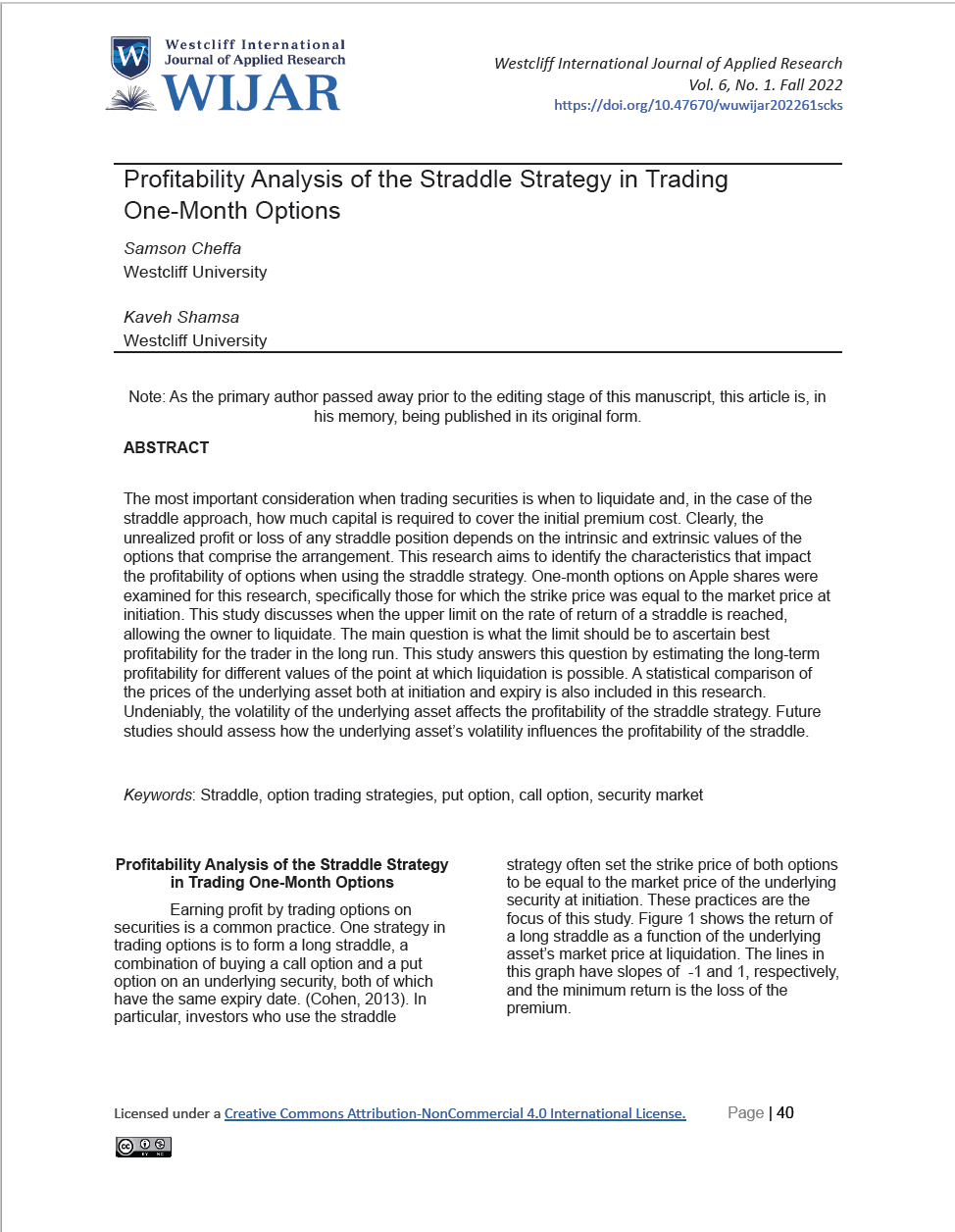Profitability Analysis of the Straddle Strategy in Trading One-Month Options

Author: Samson Cheffa & Kaveh Shamsa
Issue: Fall Issue, 2022
Download ArticleAbstract
The most important consideration when trading securities is when to liquidate and, in the case of the straddle approach, how much capital is required to cover the initial premium cost. Clearly, the unrealized profit or loss of any straddle position depends on the intrinsic and extrinsic values of the options that comprise the arrangement. This research aims to identify the characteristics that impact the profitability of options when using the straddle strategy. One-month options on Apple shares were examined for this research, specifically those for which the strike price was equal to the market price at initiation. This study discusses when the upper limit on the rate of return of a straddle is reached, allowing the owner to liquidate. The main question is what the limit should be to ascertain best profitability for the trader in the long run. This study answers this question by estimating the long-term profitability for different values of the point at which liquidation is possible. A statistical comparison of the prices of the underlying asset both at initiation and expiry is also included in this research. Undeniably, the volatility of the underlying asset affects the profitability of the straddle strategy. Future studies should assess how the underlying asset’s volatility influences the profitability of the straddle.
